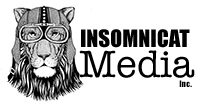Let’s Talk About Content Conversions
A conversion is one way to describe a particular action you want someone to take. Simply put, it’s a fancy way of saying someone responded to your call-to-action, whatever that might be.
At different phases along the marketing journey/buyer journey, a conversion will mean different things and along the road of content marketing, a conversion will always depend upon your goal.
For example, if you want someone to download your white paper and they do, that’s a conversion. If you want someone to register for your newsletter, and they do, that’s a conversion. If you want someone to buy something from you, and they do, that’s another conversion.
The one thing about our digital world is that makes conversions easier to understand is that so much is traceable. Whereas in days passed conversion rates were difficult to track, now we’ve got data – and the tools to gather it.
How To Create Content Conversions
As we mentioned, a conversion means different things to different marketers, but in this case, let’s talk about content, What we want is content that sparks a reaction. So how do we do it? We focus on a variety of factors such as headlines, introductory paragraphs, images, research and statistics, originality, graphic representations, videos, and formatting – just for starters.

The real gem lies in the effective call-to-action. If you don’t tell people to do something, then how will they know to do it?
Creating an Effective CTA
In its simplest for you’ll want to tell someone what they should be doing. The most basic examples of call-to-actions are “Buy Now” or “Request a Quote”. But those are weak. Here are 10 tips for provoking some action:
- Tell users what they can expect if they do what you want them to do.
- Include industry-specific terminology, if it applies.
- Take control of your reader with action words like buy, shop, download, or subscribe.
- What’s in it for me? Let users know that they’re going to benefit in “this” way by doing something. (Maybe saving money or learning a new skill.)
- Create a sense of urgency. People don’t want to be left out. Tell them when offers are going to end.
- Promote free trials.
- Appeal to our culture’s need for instant gratification with words like “get” and “now”.
- Intrigue readers with curiosity by showing them something they really want to know and how it affects them.
- Create a problem, then solve it within your call-to-action.
- Make sure your call-to-actions are mobile-optimized.
Conversions Through the Funnel
How do you communicate with your customers on a regular basis? Each action a user takes to interact with you is considered a conversion, ultimately leading to the holy grail of conversions: a sale. Conversions are vital to your content marketing strategy because they help you develop a list of contacts that are all yours. New visitors to your site need an opportunity to join your community, so they need content.
What kinds of lead-generating (conversion-evoking) content should you develop? Here are a few examples of effective lead-gen content types that you can develop:
- eBooks
- Webinars
- Contests
- Trials
- Guides
- Kits
- Research/Data-driven papers
- Tools
- White Papers
- E-mails
Now that you’ve gotten a list of people who have converted to followers and community members, you’ll need to onboard them through a series of conversions, often delivered via e-mail marketing techniques. One great way to do this is to offer them free stuff. Webinars, demos, and guides are good offerings here.
The goal is to turn those e-mails into a conversation (another conversion) with a real human because no matter how high-tech we get in our daily lives, human interaction is still a primal desire and the best way to eliminate confusion.
Along the path of regular e-mail marketing tactics and content offerings of all types and eventually a conversation, you’re waiting for the moment you can finally pitch something and generate that sale. Once a user has read various e-mails from you and interacted with different kinds of content, it’s more likely that you won’t suffer from extreme rejection when it comes to making that sale. But it’s not impossible.
The thing about converting prospects into customers is that it doesn’t end there. Whether you close a deal or not, more content is required. If you’re rejected, you need to get more personal and re-cap your discussion with the prospect, check in to see if he or she has made any progress on the buying journey and make a better offer.
If they did convert, and you’ve got a new customer on your hands, you need to make sure you don’t forget about that person. Reward those people with special content and offers, again get personal, provide useful how-to’s, and keep them coming back for more. Even better, keep them so engaged that they may refer someone else.




Leave a comment